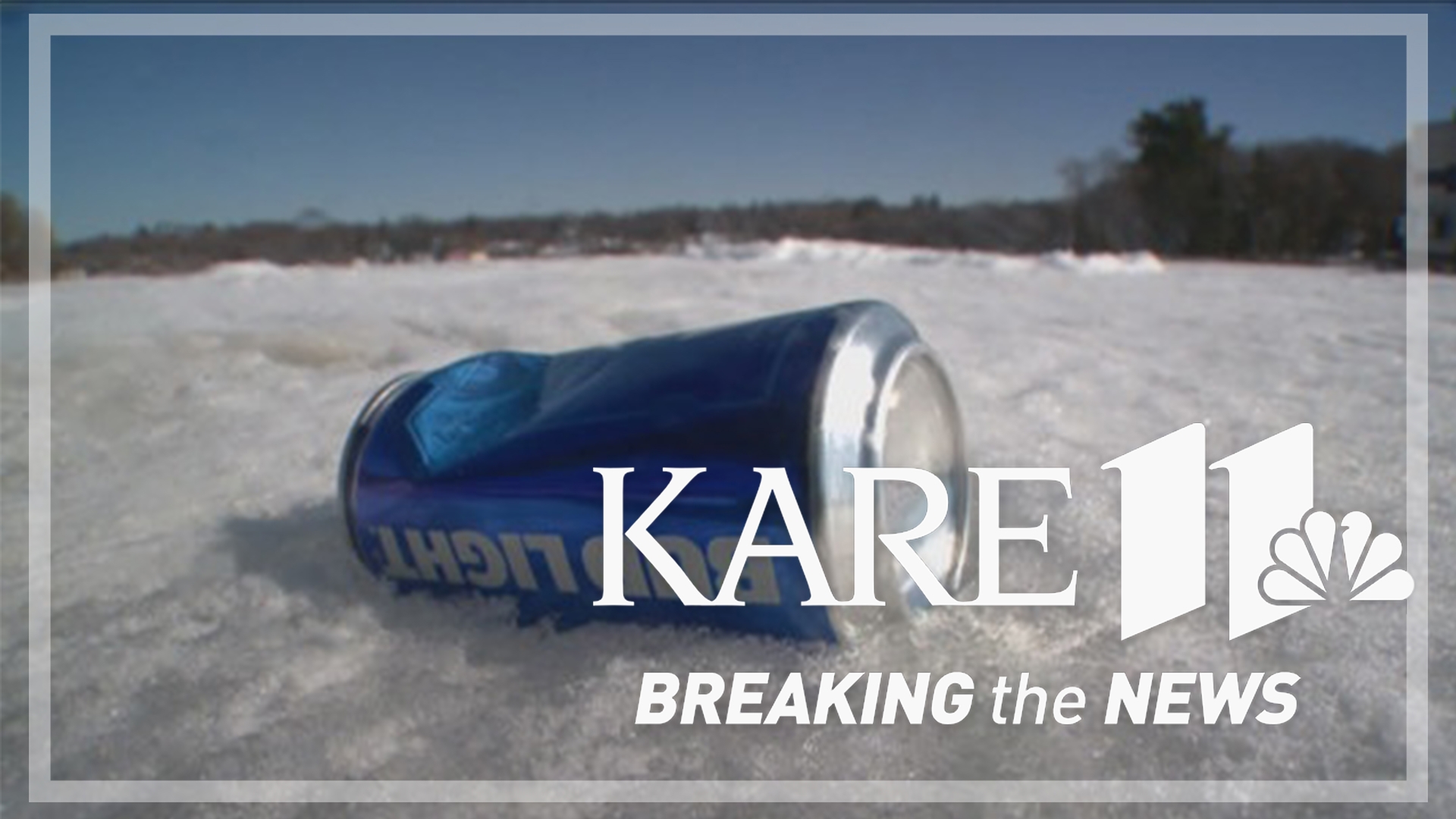MILLE LACS, Minn. — Mille Lacs Lake is known for many things.
As Minnesota’s second-largest lake, Mille Lacs is a premier destination for fishing enthusiasts, averaging about 2.5 million angler hours annually.
Except with more tourists, comes more litter.
The popularity of ice fishing in particular has quickly grown in recent years with better technology, equipment, and wheelhouses. With the increased activity comes more pressure on the natural resources including an increase in garbage and litter left on the ice.
"If no one is cleaning that up, it continues to re-circulate in our lake and degrade in ways we really don't want it to," says Keep It Clean Coalition member Ann Brucciani Lyon.
About 30 lakes are now part of that campaign, including Mille Lacs. The coalition also helped pass a new law during the 2023 legislative session. It makes it clear trash needs to be taken off the ice and disposed of properly. It also gives DNR conservation officers more muscle in ensuring visitors do so, including issuing a $100 fine.
"I then thought, if we've taken steps to help decrease the amount of garbage that's being left on the ice or going in the lake, how do we assess how serious the trash problem is underwater," said Brucciani Lyon. "I did some digging and found Colin's number."
Colin West started the nonprofit Clean Up The Lake that's well-known for performing conservation dives in the Sierra Nevada around Lake Tahoe that focus on submerged litter clean-up.
The wine connoisseur turned self-professed underwater garbage man and his scuba divers just completed two weeks of pilot research to gain insight about submerged litter and its movement around Mille Lacs. The project was funded by the Clean Water Land and Legacy Amendment.
"It's an assessment, if you will, of what is going on under the surface," said West. "From a submerged litter standpoint, this is looking a bit better than we thought."
The extensive analysis included 15 sites on Mille Lacs and 12 surveys with scuba divers using an underwater remote-operated vehicle in some of the most heavily fished areas of the lake. They also weighed and documented everything they found.
"It's just a new experience every time you're underwater," said lead diver Shawn Louth, who says the crew found heavy items that had been submerged for decades, including wheels, cinderblocks, anchors and glass.
The organization also discovered lightweight litter is pushed to shore because the lake is so shallow. That included aluminum cans, fishing line and shotgun shells.
By comparison, in the alpine lakes in the Sierra Nevada, litter becomes trapped on steep underwater shelves near shore.
"I've been down to 38 degrees before and that's where every 30 seconds I'm looking at my volunteers, saying are you cold, are you good and as long as we're communicating that, it's fairly safe," said Louth.
He says the most interesting things his team discovered includes a gun, Indigenous canoes and even liquor bottles from the 1800s. Louth and his team mark the location of the items with GPS and report them to the proper authorities.
The group's next steps are to analyze all the data it has collected and to document those findings in a detailed report that will include future recommendations for litter mitigation.
"For some reason we have groups around the world paying attention to marine litter, which is devastating and important to protect our marine life, but what about the water we're putting in our own bodies," said West. "I want to know that the water I'm drinking is safe and good and protected."
The team is now considering coming back to Mille Lacs in the spring and putting snorkelers in the water right after the ice melts. They will focus on cleaning up the lightweight litter along the shoreline.

